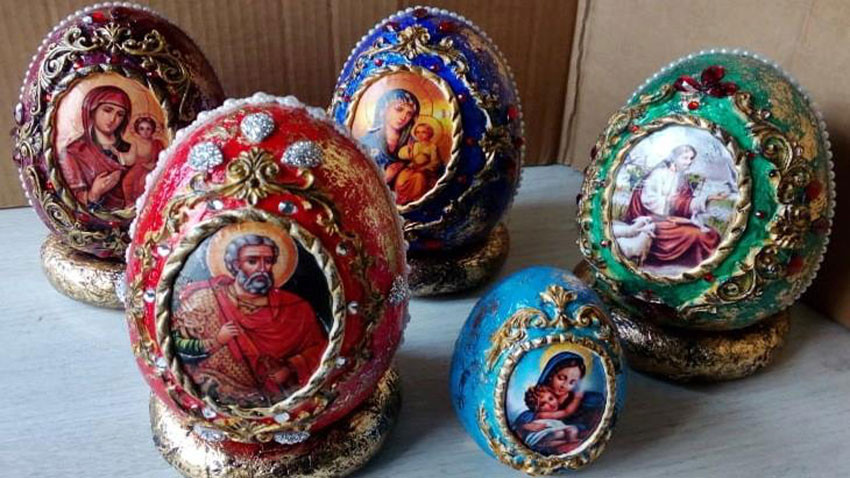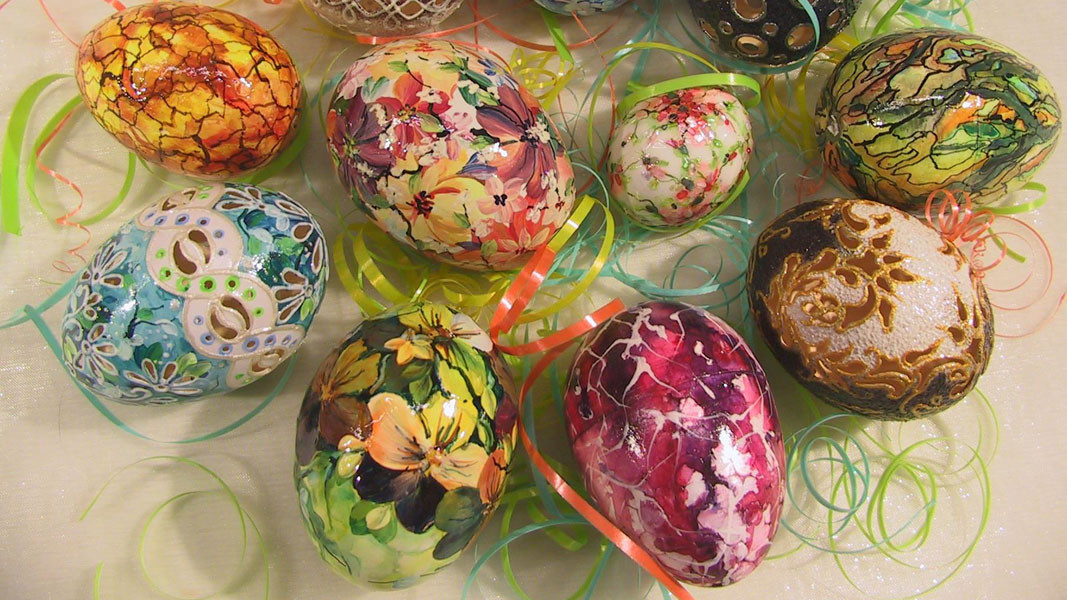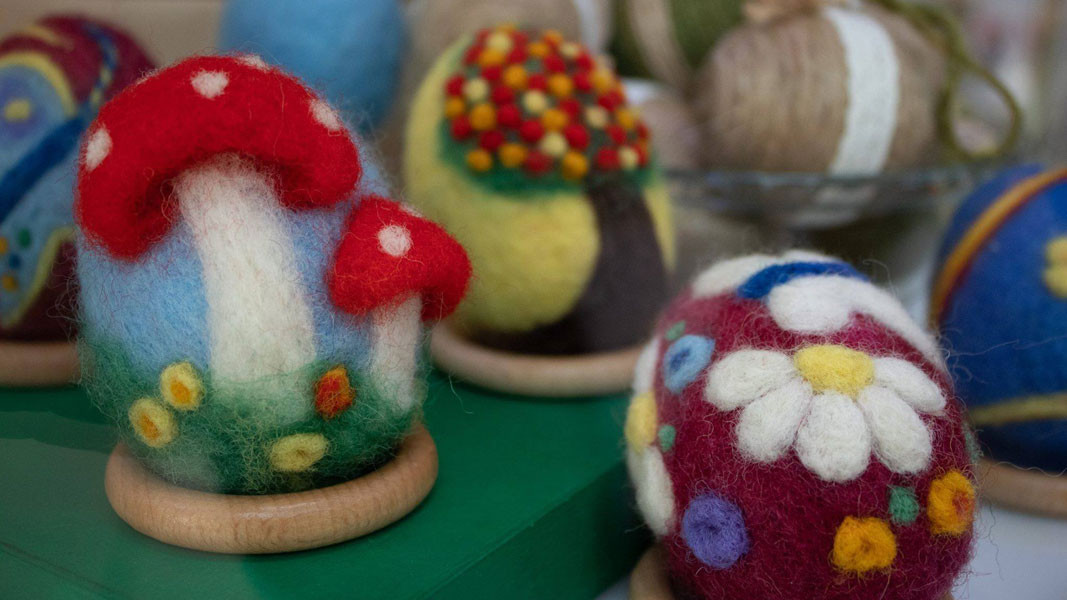Eggs have always been the symbol of Easter. The old-time techniques of dyeing eggs are now making a comeback, new ones are appearing, and in the hands of the women adept at this craft, eggs become veritable works of art. In their work they use natural eggshells but all kinds of other materials as well.
Mira Petkova paints saints on the Easter eggs she decorates. The foundation is ceramic, and the other materials are painted on top. She uses acrylic paint, gold foil, self-drying terracotta. She says the techniques she applies are not sophisticated, but it takes time for the materials to dry out, and the choice of picture is really important. The relief elements which make the faces of the saints come to life take the longest to make.

“These are not icons but anyone wishing to can take them to church to be sanctified. It gives me real pleasure to make them. Each egg is unique because of the difference in the details.”
Lyubomira Zarkova decorates her Easter eggs stitch by stitch.
“Embroidered eggs are a beautiful addition to Easter decorations and a wonderful gift for the people we love,” Lyubomira Zarkova says. “Most often classical Easter themes are depicted like eggs, willow twigs, chickens, bunnies, flowers, traditional embroidery.”

The decorations on these eggs are hand-made embroidery on a Styrofoam foundation. The picture is embroidered onto the obverse with a floral fabric on the reverse side, then ribbons, flowers, butterflies or galloons are added. As Lyubomira says the most difficult thing is to keep the fabric straight so it won’t crease.
Tsvetislava Lozanova is a decorator and she has become proficient in different techniques which she has developed and combined. As a result the eggs she paints over are striking in their diversity and flight of fancy.

“I mostly paint on wooden eggs, but what I love most is natural shell, and to my mind, the beauty is to engrave them because that makes the eggs look truly exquisite,” says Tsvetislava Lozanova. “Once I get the foundation ready I start to draw, to engrave, to model, to do decoupage. I only use water-based materials and I frequently improvise. For the engravings, however I have to think ahead – to come up with the design and plan what techniques to use to get the result I am after.”
Once the egg is almost ready it is lacquered over many times to “seal” it, and that makes it look as if it is made of china, with a smooth surface and a depth, the individual elements are outlined to make them stand out.
Rositsa Russeva uses an ancient technique of painting with wool. It is a traditional method of decoration, and not just of Easter eggs. Often Styrofoam is used as a foundation to give the egg a regular shape though it is not obligatory.

“I use pure Bulgarian wool,” Rositsa Russeva explains. “Special needles are used to draw on the egg. Most of my ideas come to me as I am actually working. And the secret of felt wool eggs is the love and patience it takes to make them – you really have to want to make them.”
The creative flair is what turns these Easter eggs into beautiful and original designer souvenirs, a wonderful memento that can stay with us for many years.
English: Milena Daynova
Photos: private library
On this day 35 years ago, the authoritarian regime of communist dictator Todor Zhivkov collapsed. To mark the anniversary, the BGNES news agency carried out a survey of monuments to totalitarianism. The agency checked whether the monuments of the..
Residents and guests of the village of Kolena, Stara Zagora Municipality, gather for the Young Wine Festival. The event was celebrated for the first time in 2017, and a few years later the local teacher and winemaker Martin Slavov gave the..
The tallest Ferris wheel in Bulgaria will rise above Pleven , announced regional governor Nikolay Abrashev. It will be built in a multifunctional complex near the Kaylaka Park. "The project envisages the construction of a Ferris wheel with a..
Who said Bulgarians were grumpy pessimists? Take a stroll through Sofia's Christmas bazaars and meet the cheerful crowd. The festive decorations, music,..

+359 2 9336 661
